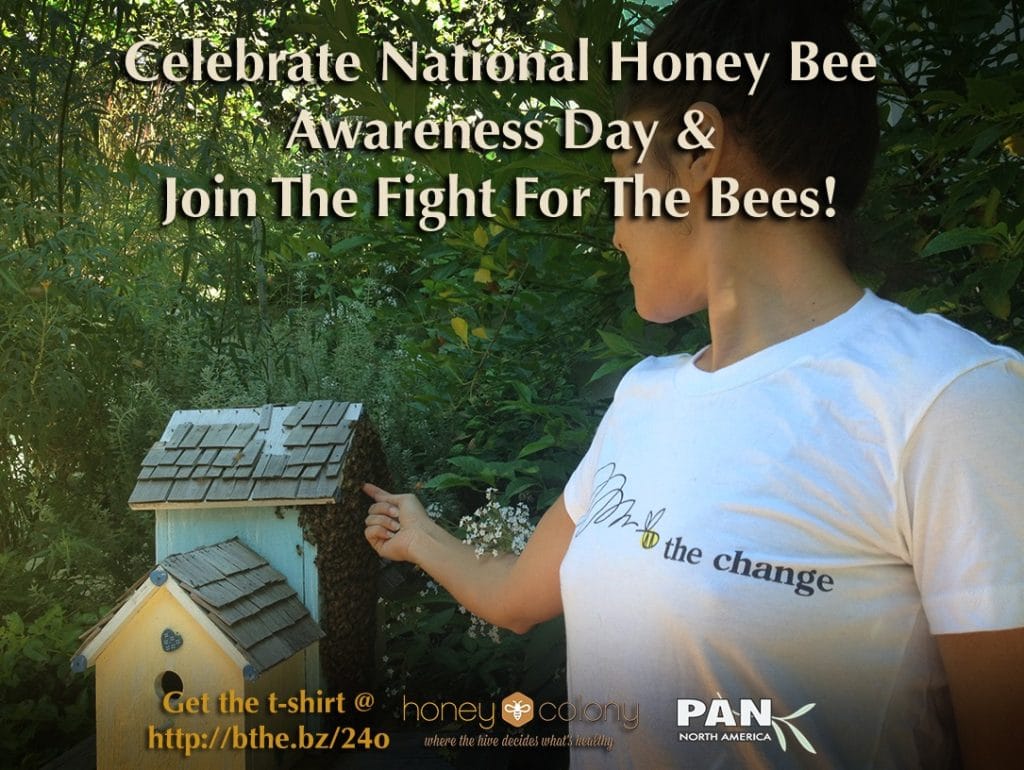By Maryam Henein, Honey Colony
While discussing the fourth annual National Honeybee Day, on August. 17, a colleague from the Center for Food Safety informed me that the bees were going to be landing on the front cover of Time Magazine. Did this mean that the bees were officially mainstream now? Was the article going to tell the masses that systemic pesticides are responsible for colony collapse disorder, a theory that my documentary Vanishing of the Bees put forth four years earlier?
Luckily, I subscribe to Time. When I downloaded it onto my Kindle, I was greeted with an audio clip of buzzing bees. That was the most impressive part of the package aside from the cover art.
The only new thing I discovered was the development of a genome repository—a.k.a a sperm bank for bees—by Washington State researchers. The article could have easily been dated August circa 2009.
The piece lists several suspects affecting the bees’ demise, such as the bacterial disease American Foulbrood, the parasite Nosema ceranae, and the vampiric Varroa mite. The author also throws systemic pesticides into the mix , but fails to stress that it’s these poisons that are responsible for compromising the honeybee’s immune system, making it impossible for honeybees to fend off pathogens.
Honeybees are environmental indicators—the modern-day canary in the coal mine. Except you can theoretically escape a coal mine, but not planet earth. To many of us, the only mystery behind colony collapse disorder is that these pesticides aren’t yet banned in the United States. The Center for Food Safety, along with four beekeepers and four other environmental and consumer groups, filed a lawsuit in Federal District Court against the Environmental Protection Agency this past March for its failure to protect pollinators from dangerous pesticides.
Chemical companies coat commercially produced seeds with systemic pesticides that absorb into the plant; they use applicators to spray the air and land from above while beekeepers add miticides and fungicides to their own hives. All of these combined toxins synergize, sometimes becoming 1000x more potent. These days, one itsy bitsy pollen grain typically contains nine different pesticides. No one needs a science degree to know that these poisons affect bees (and beings) in sublethal ways. It’s common sense.
“If we don’t make some changes soon, we’re going to see a disaster,” says Tom Theobald, a beekeeper in Colorado featured in Vanishing of the Bees. “The bees are just the beginning,” he told Time Magazine.
In 1946, the United States had 5.8 million hives. Today we are down to 2.2 million. Although Time Magazine is not ahead of its time when it comes to the bees or explaining their disappearance, every bit of publicity does help raise awareness. And it is up to us to be the change we want to see if we want to save our honeybees and ourselves—not to mention saving the native bee populations and all the other creatures that are slowly dying.
Let us continue to stand up against the ills of Big Agra and Big Pharma. August 17th is National Honeybee Day. Consider calling your representative now and urging them to support the Save the America’s Pollinators Act, or voting “no” on the upcoming King’s amendment to the Farm Bill. Host a screening of Vanishing of the Bees to spread the buzz. Or buy a Bee the Change T-Shirt to make a statement. We will donate part of the proceeds to a bee cause.


